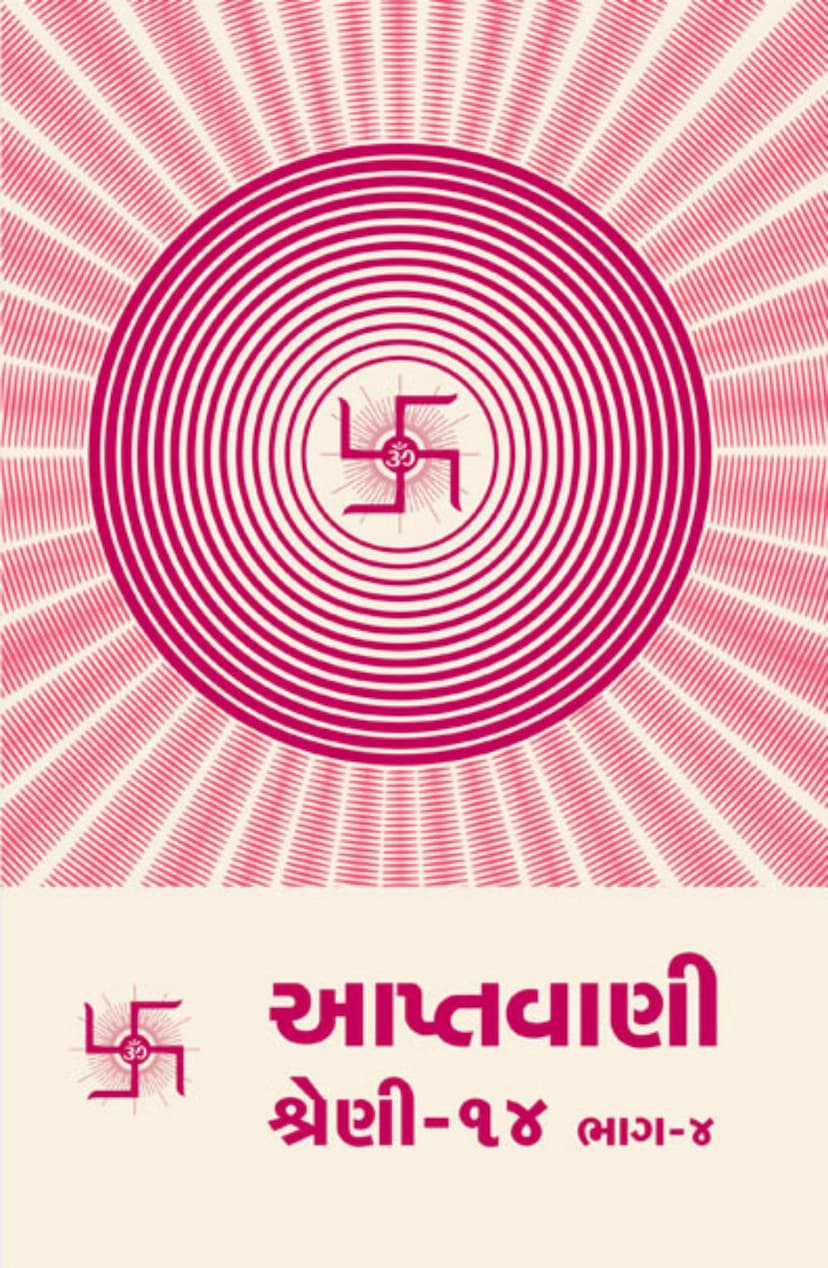Aptavani Shreni 14 Part 04
Added to library: September 1, 2025

Summary
Summary of Aptavani Shreni 14, Part 04 by Dada Bhagwan
This Jain text, "Aptavani Shreni 14, Part 04," compiled by Deepak Desai and published by Shri Ajit C. Patel of Dada Bhagwan Aradhana Trust, is a collection of spiritual discourses by Dada Bhagwan (also known as Dada Shri or Dadashri). The book focuses on the profound nature of the Soul (Atma) and the path to self-realization according to Dada Bhagwan's Akram Vignan (Unincremental Science).
The central theme revolves around understanding the Soul's inherent qualities and its true nature, which is described as pure, infinite, and untouched by the worldly phenomena. The text elaborates on various attributes of the Soul, presented in a question-and-answer format, drawing from Dada Bhagwan's direct experiences.
Here's a breakdown of the key concepts and themes discussed:
1. Nature of the Soul:
- Infinite Qualities: The Soul is described as having infinite qualities, with infinite knowledge (Gnan) and infinite vision (Darshan) being the primary ones. Other qualities include infinite energy, infinite bliss, being incorporeal, immeasurable, indestructible, unattached, and beyond cause and effect.
- Eternal and Unchanging: The Soul is eternal, unborn, immortal, and unchanging. Its fundamental nature is pure consciousness.
- Self-Luminous and Experiential: The Soul is self-luminous and the ultimate reality that can only be experienced, not merely understood through intellect or scriptures.
- Differentiating Soul from Non-Soul: The text emphasizes the crucial distinction between the Soul (Atma) and the non-soul (Pudgal) – the body, mind, speech, and actions. Understanding this difference is key to liberation.
2. Akram Vignan:
- Direct Link to Self-Realization: Dada Bhagwan's Akram Vignan is presented as a direct and rapid path to Self-realization, unlike the gradual, step-by-step (Kramik) path of traditional spiritual practices. It is described as a "shortcut" or "lift" to the Soul.
- Knowledge-Based Science: Akram Vignan is a science based on knowledge and understanding, not on ritualistic actions or arduous practices. Understanding its principles can lead to direct experience.
3. Attributes of the Soul (elaborated extensively):
- Gnan (Knowledge) & Darshan (Vision): The Soul possesses infinite knowledge and vision. Knowledge is described as permanent, while the act of knowing (Dharma) is temporary and changes with states of awareness.
- Shakti (Energy): The Soul has infinite, inherent energy, but it is veiled by ignorance. This energy is not mechanical but spiritual and capable of influencing the entire universe.
- Aishwarya (Glory/Riches): The Soul is inherently filled with infinite glory, which is veiled by coverings. Realizing the Soul reveals this inherent glory.
- Virya (Potency/Strength): Infinite Virya manifests as unwavering spiritual strength and the ability to perceive all truths, past, present, and future.
- Sukha (Bliss): The Soul is the abode of infinite bliss, which is eternal and unaffected by worldly dualities. This bliss is inherent and does not depend on external circumstances.
- Aguru-Laghu: This refers to the Soul's immeasurable and unchanging nature, neither increasing nor decreasing, beyond qualities of heaviness or lightness.
- Asang (Unattached): The Soul remains unattached to all worldly phenomena, even while residing within them.
- Nirlep (Untainted): The Soul is untainted by any actions or experiences of the body, mind, or speech.
- Aspruhya (Unsplinterable): Nothing can physically touch or harm the Soul.
- Nirvikari (Unchanging): The Soul is free from all modifications and transformations.
- Anasakt (Non-attached): The Soul naturally remains free from attachment.
- Nirvishesh (Indescribable/Formless): The Soul is beyond all descriptions and attributes that can be grasped by the intellect or speech. It is ultimately an experiential reality.
- Avaktavya (Unspeakable): The true nature of the Soul cannot be fully conveyed through words.
- Anubhavgamya (Experiential): The Soul can only be realized through direct experience, facilitated by a Gnani Purush (Self-realized being).
4. The Role of the Gnani Purush:
- Giver of Self-Realization: The Gnani Purush is essential for guiding individuals to Self-realization. They have the power to impart the knowledge of the Soul, thereby removing ignorance and veils.
- Revealer of the Soul's Nature: The Gnani Purush has directly experienced the Soul and can explain its nature with clarity and through practical examples.
- Link to Liberation: Through the Gnani's grace and guidance, one can achieve the state of the Soul.
5. Practical Application and Spiritual Practices:
- Self-Attribution (Nischay): Constantly recognizing oneself as the Pure Soul ("Hu Shuddhatma Chhu") is crucial.
- Observing and Knowing (Jannata-Drushta): Maintaining the awareness of being the knower and observer of all phenomena without getting entangled in them is a core practice.
- Five Commands (Panch Aagna): Adhering to Dada Bhagwan's five fundamental commands is presented as a way to increase awareness and progress on the spiritual path.
- Simultaneousness (Akram): Akram Vignan allows for simultaneous progress in spiritual realization while living in the world.
- Devotion to the Gnani (Bhakti): True devotion, especially through chanting or contemplating the Gnani's words and nature, leads to Self-realization.
- Self-Study and Contemplation: Regularly studying the Soul's attributes and contemplating them is encouraged.
- Acceptance and Equanimity: Understanding that all situations are governed by a higher order (Vyavasthit) and maintaining equanimity is vital.
The text emphasizes that through Dada Bhagwan's grace and the principles of Akram Vignan, one can realize the Soul within a short period, leading to liberation from suffering and the experience of eternal bliss. The book is a guide to understanding the Soul's true essence and living in accordance with it, thereby achieving ultimate freedom.